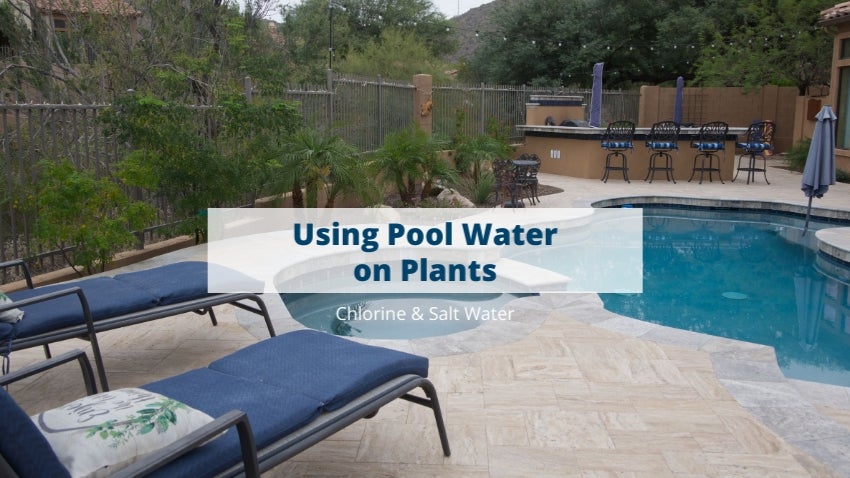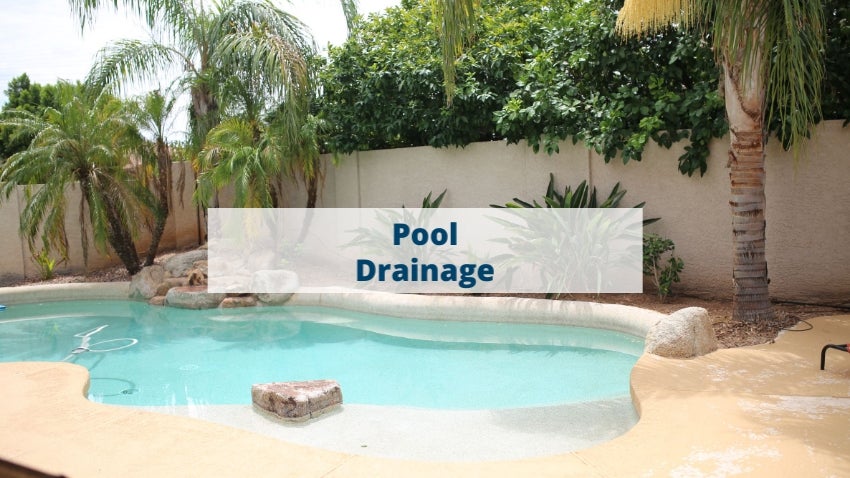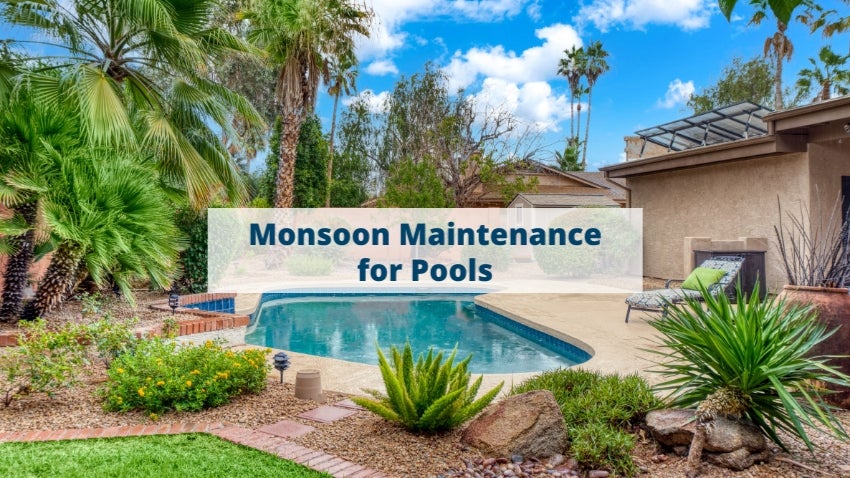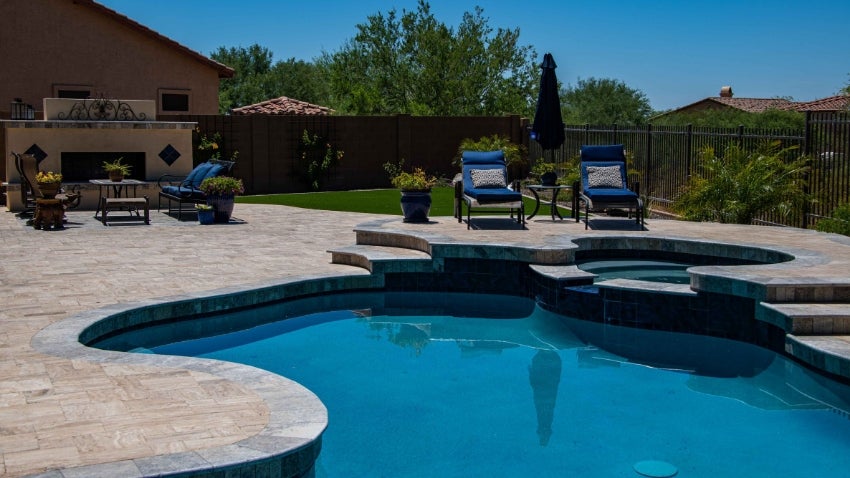
Pools are a great way to stay cool in the summer heat but are also one of the greatest outdoor water users. Make sure your pool is maintained and cared for on a regular basis year-round. Before you dive in, it’s important to ensure your pool is running as efficiently as possible.
Conserve water in your pool by:
- Finding and fixing leaks. A stuck fill valve running continuously can easily waste up to 30,000 gallons of water in a month. Regularly check your pool pump and plumbing for leaks. It is estimated that 30 percent of all pools have a leak, and many go undetected.
- Properly maintaining your pool water and chemical levels.
- Minimizing pool splash-out by keeping the pool level half-way from the top of the skimmer box.
- Keeping your filter clean and only backwash when really needed. The average backwash uses between 250 to 1,000 gallons of water. Only backwash until the water runs clear. Use an in-line “skimmer sock” leaf trap to reduce backwash frequency.
- Avoiding draining your pool. There are portable water restoration systems that can eliminate the need to drain the pool. Contact your local pool professional for more information on this service.
- Reusing pool water when backwashing or draining is required. Do not add chemicals for up to 72 hours, then flush the water onto salt-tolerant plants, such as Oleanders, Bermuda Grass, etc.
In our dry desert climate, an average swimming pool can evaporate 20,000 gallons of water in a year. Backwash and splash out can also contribute to water loss.
Average Pool Evaporation
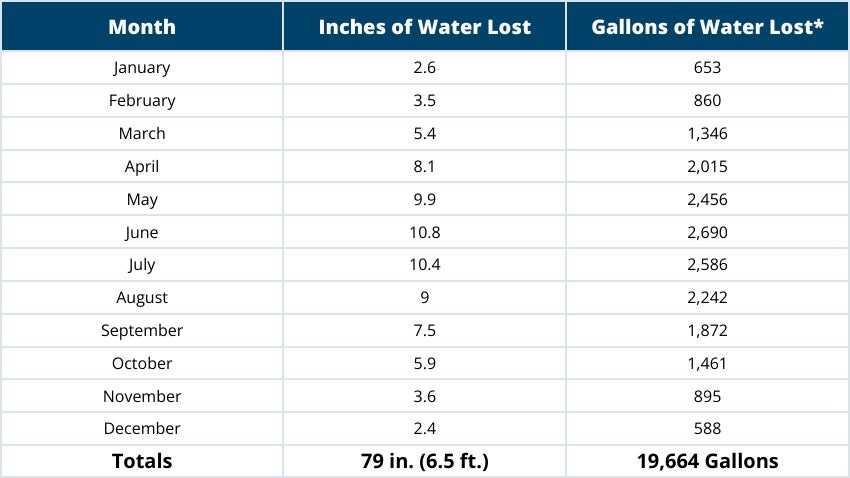
*Estimated losses based on a 400 square foot pool. Does not include increases due to rainfall.
Evaporation is affected by:
- Air Temperature/Humidity
- Coloration of the Pool Interior
- Shading
- Sunlight Intensity
- Water Volume
- Wind
You can minimize pool evaporation by taking effective steps to prevent liquid losses from your pool.
Checking and Repairing Leaks
Most pools have an autofill valve. Autofill valves can malfunction or leak. These leaks can often go unnoticed wasting thousands of gallons. Leaks may occur for a variety of reasons.
- There may be cracks allowing water to leak undetected.
- Leaks can occur due to plumbing problems or improper seals around pump fittings that leak only when the pump runs.
- Ultraviolet (UV) rays from the sun will rapidly degrade PVC pipe if it’s not painted or protected.
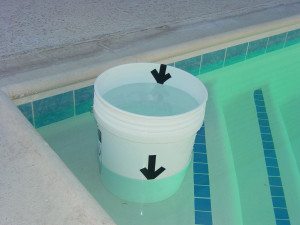
To determine if your pool is leaking, perform a bucket leak test.
- Disable (turn off) the autofill valve (if present).
- Place a bucket or container on a pool step without submerging it.
- Use a large rock or brick to weigh down the container.
- Fill it with water so it is the same level as the pool water.
- Mark the water level inside the bucket using either a water-soluble marker or a piece of tape.
- Mark the pool water level on the outside of the bucket.
- Wait at least two to three days to let natural evaporation occur.
Compare the two water levels. If the pool water level (outside mark) dropped more than the bucket’s water level (inside mark), you could have a leak and may want to contact a pool contractor. If the level changes are the same, only evaporation has occurred, and you can resume normal autofill operation.
To further detect the cause, repeat the bucket test. First, measure the water loss after 24 – 48 hours with the pump running, then measure the water lost again after 24 – 48 hours with the pump off. If water is lost when the pump is running, the plumbing is probably the cause.
If you’re a do-it-yourselfer, you may be able to identify and repair most leaks. If you need assistance, call a leak detection service or pool repair company for help.




